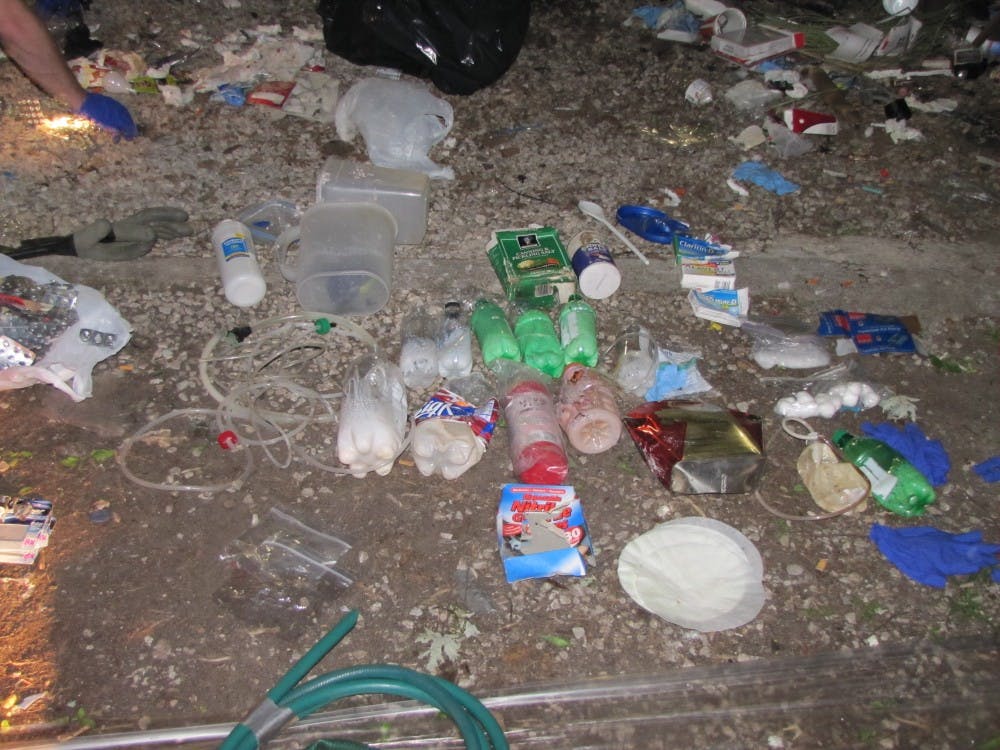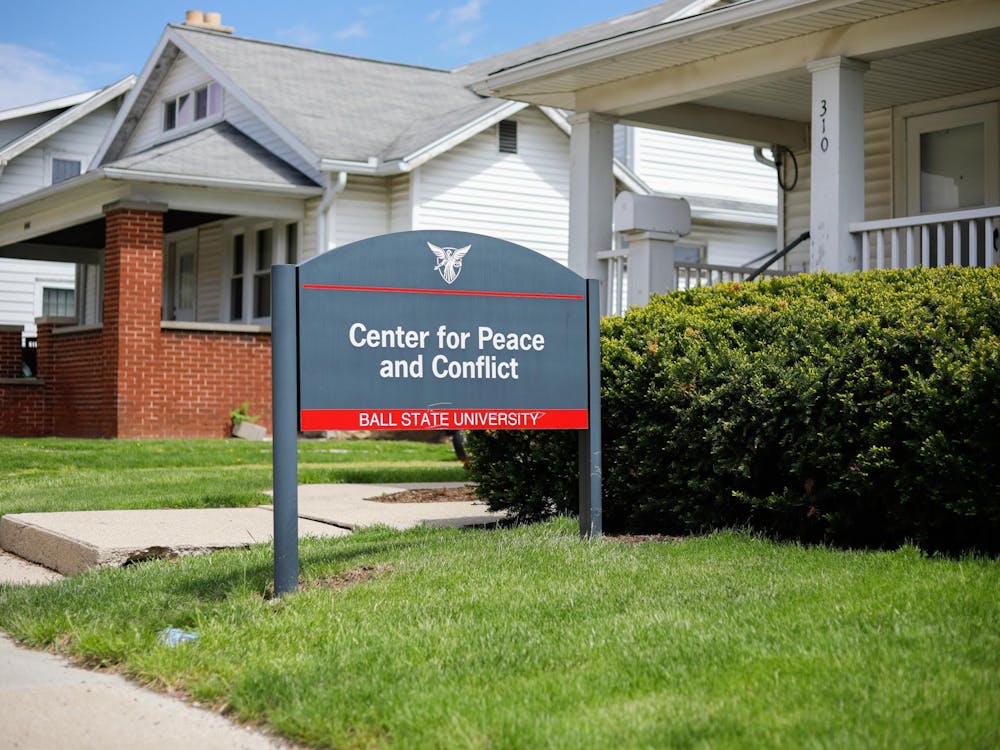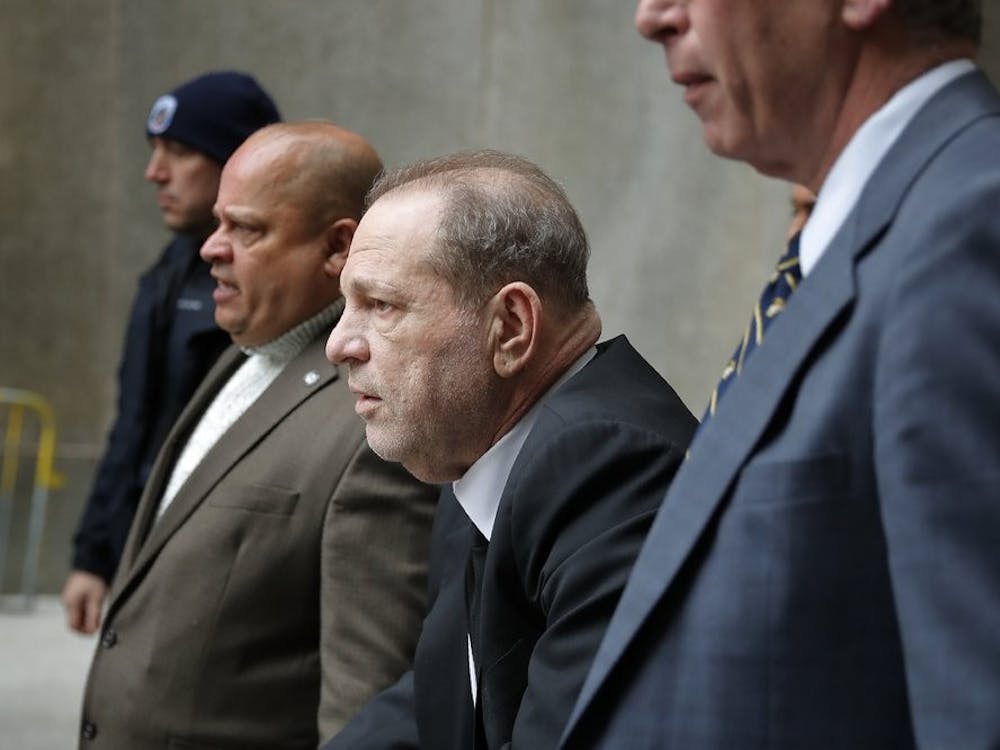Heroin, a drug of the grittiest streets a generation ago, is increasingly popular in even the wealthiest Indiana communities today and is trapping an ever-growing number of younger users, police and parents say.
From 2012 to 2013, there was an approximately 125 percent increase in heroin submissions, said Indiana State Police Captain Kevin Hobson. This number has continued to rise, though not as sharply, he said.
Hobson, a deputy commander in special investigations, has worked undercover for 10 years and has a background in narcotics.
He said the state police lab covers all four corners of the state and receives submissions when different drug cases come in.
Hobson explained people are used to identifying heroin as a dirty street drug, but it is now being used by the “captain of the football team” or the “star gymnast.”
“Addiction is driving this,” Hobson said. “The reason it is drawing so much attention is because people are dying.”
The problem begins with opioids prescribed for pain. Hobson explained a hypothetical situation of a student-athlete getting injured and having surgery.
“A doctor prescribes this athlete to a painkiller that costs $60-$80 on the street,” Hobson said.
The athlete gets addicted to the painkiller but can’t afford to buy it, so they turn to other drugs.
“Heroin costs as much as going to a movie now and is easy to get,” Hobson said. “We are now seeing overdoses in $300,000-$400,000 homes, and that is causing attention.”
Hobson said the police are doing things to strengthen their drug effort as a whole.
“We are putting our detectives and police force through more drug training, and we are specifically doing things to put more resources into drug crime investigations, more than we had in the last ten years,” Hobson said.
The National Survey on Drug Use and Health (NSDUH) collects information on heroin use. In 2013, it estimated 169,000 individuals aged 12 or older used heroin for the first time in the past year.
Kids are unaware of the dangers of heroin overdoses when they are experimenting with drugs, Hobson said.
One problem Hobson pointed out is the purity level. When people buy heroin, it could be a pure or dirty batch. Two people could do the same amount of heroin from two different batches and one of them could overdose and the other could be fine.
“That is the risk they are taking,” Hobson said.
Gina Bardach started Hope and OVERComing, a non-for profit organization located in Hamilton County, after her youngest son battled a heroin addiction. Hope and OVERComing is a charitable organization that provides support groups, an atmosphere of healing, and recovery for families and those suffering from the addiction of heroin.
Bardach said there are signs people can look for in order to determine if someone is struggling with heroin.
“People using heroin begin to lose weight, they nod off or fall asleep easily, even while talking,” Bardach said. “They will talk slowly and slurred. Besides physical signs, you should look out for missing spoons, needing money, being anxious, angry or sick (usually when they haven’t had their 'fix' when they needed it).”
Bardach feels young people do not know enough about heroin, and by the time they find out, it’s too late.
“Sadly, young people are being introduced to drugs before parents and educators teach them about drugs,” Bardach said. “When other young people introduce things like opiate pain killers, they describe to their buyer how great it will make you feel and sell it as a fantastic tool to get through the day relaxed. When people realize heroin is an opiate and much like the many painkillers they consume, they easily make the switch. It’s cheaper and makes you high faster.”
As of last year, Hamilton County, where Bardach lives and raised her family, is the second wealthiest county in Indiana, according to onlyinyourstate.com.
Hamilton County is ranked ninth in overdose deaths out of 92 counties, according to Hope and OVERComing.
“That, in my opinion, is a result of sweeping things under the rug, keeping it a secret and not being real,” Bardach said. “Not teaching the community what is happening is not helping.”
Programs and methods taught in school, Bardach believes, are not helping the problem. She said “Just Say No” isn’t scary enough.
“Deep drug education needs to begin in junior high, and adults can’t be afraid to be real,” Bardach said. “If we taught reality and allowed people who have actually made it through heroin addiction to come and tell them horror stories, violence, the number of funerals they’ve been to, the Hepatitis C, the HIV, the sepsis, the prison and even witnessing friends go into cardiac arrest and overdoses, then maybe they will understand the seriousness of this drug.”
Bardach’s passion has helped many people overcome their heroin addiction. She and her son, who is months away from being certified as a family and crisis interventionist, understand what it takes to get through a heroin addiction. They are honest and helpful when it comes to dealing with this deadly drug.
“Heroin is the end game of all drugs,” Bardach said. “People do not start with heroin. They end with it.”





